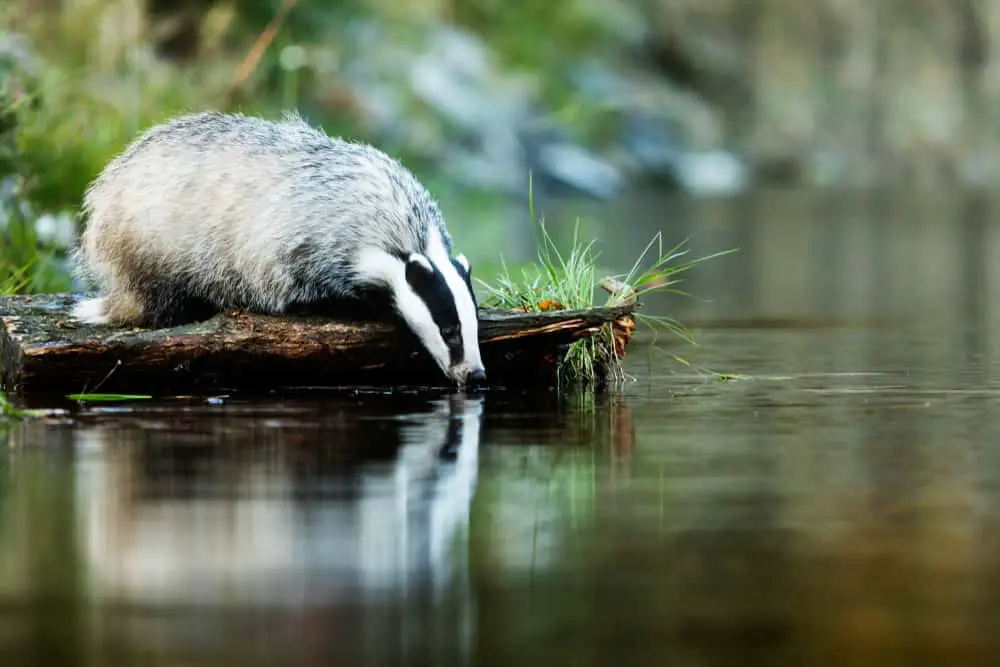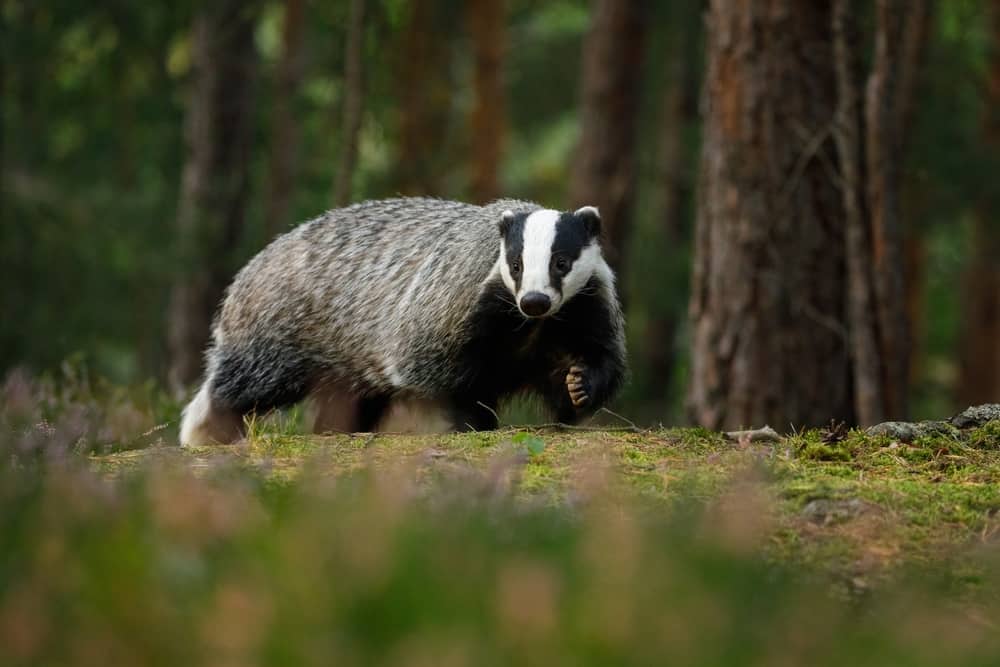The European badger (Meles meles) is a species of mustelid native to much of Europe and some parts of western Asia.
Its habitat includes woodlands, grassland, hedgerows and other areas with access to earthworms and invertebrates as food sources. In addition to diet, behavior and social structure also vary depending on geographical location.
The study of the European badger has been conducted through examination of anatomical features, behavioral patterns in various habitats, ecological niche analysis and molecular genetics. Such research provides important insight into its ecology and evolutionary history.

Anatomy
The European badger is an incredible creature, boasting fascinating anatomy and impressive mimicry techniques.
One of the most remarkable features of these animals is their strong sense of smell; they use scent marking to find food, recognize family members, and even ward off predators.
European badgers have adapted thick skin with a dense fur coat that helps insulate them from cold temperatures.
Their black-and-white coloration acts as a form of natural camouflage while also providing excellent protection against ultraviolet rays—even more so than sunscreen!
The badger’s long snout houses sensitive whiskers used for navigation in dark tunnels or underground burrows, where they can often be found living in large groups called clans.
With sharp claws on all four feet, these critters are able to easily dig into soil in search of food or safety. They generally feed on insects like earthworms and beetles but aren’t shy about scavenging for other small mammals or carrion when necessary.
Overall, it’s no surprise that the European badger has been able to survive various environmental changes over time – its cunning anatomy and behavior make it one savvy animal!
Habitat
The anatomy of the European badger is distinctive, but it also plays a role in its habitat and burrow selection. Burrows provide protection from predators, shelter during extreme weather conditions, and are used as a safe place to raise young.
As such, resource allocation for the construction and maintenance of these dens is essential for their survival. European badgers have been observed to choose an area with plenty of resources nearby when constructing their den.
They generally prefer sandy soils that can be easily excavated using their powerful forelimbs and claws. The entrances may be hidden behind vegetation or rocks so they remain relatively hidden from potential predators.
Once constructed, the badgers will allocate resources accordingly; clearing leaves and debris away from the entrance to allow access into the burrow while also keeping watchful eyes on any movements in their vicinity.
Diet
Badgers, renowned throughout Europe for their remarkable digging abilities and tenacious personalities, lead lives that are just as intriguing as they are impressive.
When it comes to diet, badgers truly exhibit a variety of creative foraging techniques:
- They’re known to scavenge the land in search of small animals such as mice, voles, shrews, and beetles.
- Badgers also practice herbivory by eating wild fruits such as apples and berries or consuming roots and bulbs from plants like dandelions.
- Occasionally they will even supplement their diets with carrion – dead animal carcasses – which can provide an ample source of nutrition despite its unpleasant nature.
These omnivorous creatures have evolved over millions of years to become one of the most adaptable species in all of Europe; capable of surviving on both plant matter and smaller vertebrates alike without fail – proving that there is no challenge too great for these fascinating mammals!
Behavior
European Badger behavior can be complex and highly variable. Foraging strategies are often individualized, with large groups of badgers exploiting a variety of different food sources within their home range.
Studies have also shown that European Badgers may travel up to 10 miles in search of food during peak periods such as summer and autumn.
Burrow dynamics vary depending on the season, but they tend to remain stable within the same area year-round.
Most burrows serve multiple purposes including shelter from predators and elements, storage for food items, and reproductive dens for females during breeding season.
When it comes to social interaction amongst European Badgers, males tend to dominate interactions while females focus more on caring for young or defending territory boundaries.
Overall, European Badger behavior is an example of adaptability and flexibility in response to changing environmental conditions and resource availability.
Social Structure
European badgers are highly social animals that live in small family groups consisting of a mated pair and their offspring.
They have well-defined foraging strategies which involve rooting through the soil to search for food, such as insects, worms, roots, and even small mammals.
Badgers also use scent marking to define their territories against other clans or individuals. Mating rituals among European badgers begin with courtship displays from the male, who will often pursue a female until she agrees to mate.
After mating has occurred, females give birth to litters ranging from two to five cubs after around seven weeks of gestation.
The mother raises her young alone while the father stays away from the den site except during feeding times when he brings food back for his family.
At about nine months old, cubs become independent but remain within their own clan until they reach sexual maturity at one year of age.
Upon reaching adulthood, these animals disperse into new areas where they can establish their own breeding territory.
Ecological Niche Analysis
The social structure of European badgers has been extensively studied for many years and is an important factor in their ecological niche.
Badger mating patterns vary depending on the region, but typically involve one dominant male and several female partners that create a small family unit or clan.
These clans may form larger colonies, which can comprise up to 100 individuals.
Climate change has posed new challenges for the survival of European badgers, as habitat loss and increasing temperatures affect their ability to find food and shelter.
Changes to precipitation levels are also likely to have an impact on soil moisture, which can influence burrow systems used by these animals.
As environmental factors continue to shift due to climate change, it will be important for conservationists to monitor changes in population size and distribution of this species across Europe.
It is clear that understanding the ecology of European badgers requires careful research into both social structures and habitats affected by climate change in order to ensure its continued survival in our changing environment.
Molecular Genetics
Molecular genetics is an important area of study for understanding the behavior and diversity of European badgers. Genomic sequencing technology has enabled researchers to uncover a wealth of information about the species, including:
- The presence of several distinct lineages across Europe;
- A high level of genetic variation that likely contributes to the species’ ability to adapt to different habitats; and
- An analysis showing how selective pressures have shaped evolutionary pathways over time in response to changing environmental conditions.
By examining gene expression patterns within these populations, scientists can also identify differences in diet preferences or susceptibility to certain diseases which may help inform conservation efforts for this iconic native mammal.
Such research will provide essential insight into why some badger populations are more successful than others at navigating their surroundings and offer clues on how best to protect them from future threats.

Evolutionary History
The European badger, Meles meles, is a fascinating species of mustelid that has been the subject of numerous evolutionary studies.
The migration patterns and interaction dynamics between different European badger populations have contributed greatly to our understanding of their evolution over time.
Studies conducted by researchers suggest that the European badger may have originated in the Iberian Peninsula before dispersing throughout most of Europe during the Pleistocene era.
Since then, they have adapted to many different climates and habitats while continuing to interact with other animals within their range.
Studies also indicate that there are two distinct genetic lineages within the European badger population; one which predominates in western Europe and another which dominates eastern Europe.
These findings provide insight into how environmental factors can shape population dynamics and contribute to speciation events among related species.
Conclusion
The European badger is an amazing species that has lived in the continent for thousands of years. Its anatomy, behavior and social structure have evolved over time to enable it to survive in a variety of habitats and climates.
Its diet consists mainly of small mammals, insects and fruits which provide important nutrients to its body. Molecular genetics studies reveal the evolutionary history behind this resilient creature while ecological niche analysis provides insight into how it interacts within its environment.
As we marvel at such an incredible mammal, let us take the opportunity to appreciate their tenacious spirit as they continue on with life like a shining beacon against adversity.
